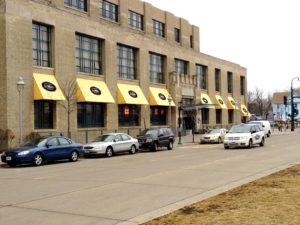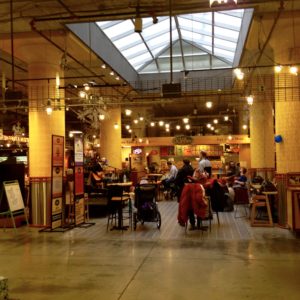Have you ever wondered if places like your favorite local restaurant, your kid’s school, or your employer’s cafeteria provide local food? The demand for more local produce and food products has been on the rise, but larger institutions have had difficulty securing enough local food options to meet the demand. An important goal of the Madison Public Market is not only to bring local food to those who visit, but also to help increase the food available throughout our region. Approximately 15,000 square feet of the Public Market will be dedicated to the yet-to-be named food innovation center, a local food production, wholesale and workforce training facility that will be a catalyst in driving Madison’s growing food economy to its full potential.
Madisonians want more local food options, so what’s the problem?
Currently, the Madison region lacks sufficient systems to connect local produce and food products to local consumers. Our growing local food economy has the potential for immense growth, but lacks these key systems to meet the demand:
- Storage and production space: Local food producers are constantly searching for affordable spaces to produce and store their food products. A simple, yet severe, lack of space is limiting the volume of local produce and products available to large institutions.
- Limited distribution system: Once more food can be produced, growers and producers must have a way to transport the food to institutions. The current model of growers/producers attempting to work individually with many large institution customers is inefficient and impractical.
- A skilled workforce: As our 21st century food system modernizes and concentrates more on the local food economy, our workforce must adapt to meet the change.
The solution…
The food production and processing facility at the Public Market will help fill the void of these missing systems and will be vital to increasing the volume and accessibility of local food throughout our community by providing the following:
- Greatly needed production space to increase the volume of local food produce and products available for large institutional buyers. For example, the Madison Metropolitan School District currently purchases thousands of pounds of local produce for school meals, which need to be processed out-of-state due to lack of local production options. Space at the Food Innovation Center can fill this gap.
- A more efficient distribution system that will enable large institution buyers to purchase from one source instead of trying to manage contracts with 20-40 different local food providers. Making it easier for large institutions to purchase goods will increase the options available.
- Workforce Training programs – As our food system evolves and grows, Madison faces an acute need for skilled workers in our food preparation and processing sectors. The Food Innovation Center will include space for workforce training programs focused on helping people become job-ready for positions in this growing industry. These programs will be provided by community partners including FoodWorks – a private sector collaboration between well-known Madison chefs and business owners focused on training unemployed and underemployed adults for positions in the culinary industry.
The Public Market team is continuing to finalize details of the center’s design and programming. Between the Public Market Development Committee and the Public Market Advisory Council, the project is fortunate to be drawing on the expertise of key local food business leaders and food system experts to plan and design the Food Innovation Center. This includes involvement from the Underground Food Collective, REAP Food Group, FEED Kitchens, the UW Center for Integrated Agriculture Systems, Fairshare CSA Coalition, several food business owners, and others.
Working together, we will build a 21st century food system for future generations that is more sustainable, equitable, fruitful, and healthy. No matter how often you visit the Public Market, the Food Innovation Center will bring more delicious local food options to your everyday life.
For more information or to get involved with the proposed food processing and production center, contact Amanda White at info@madisonpublicmarket.org
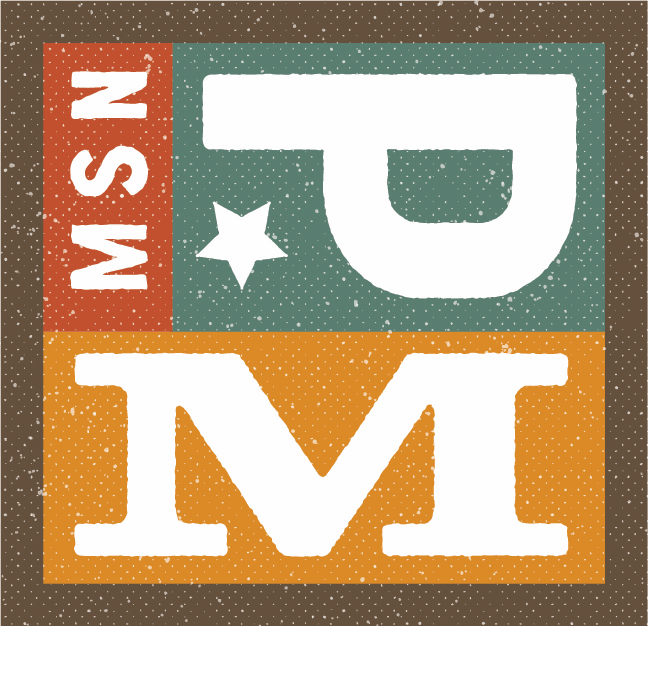
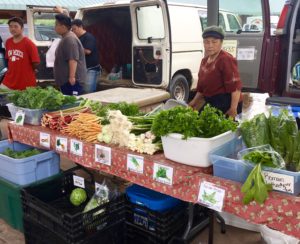
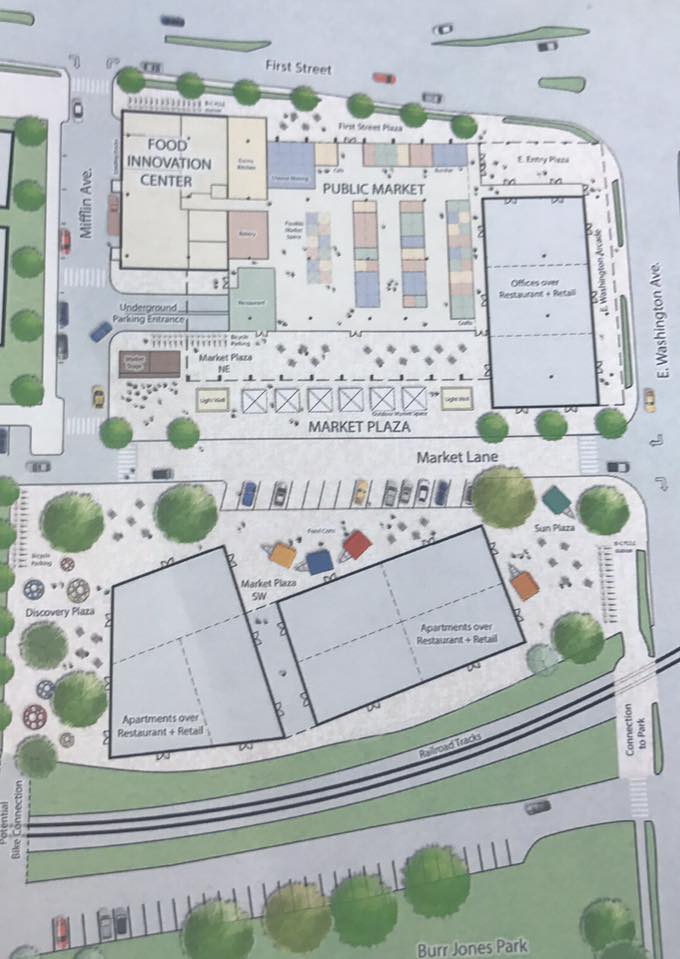 The site plan’s main features include:
The site plan’s main features include: